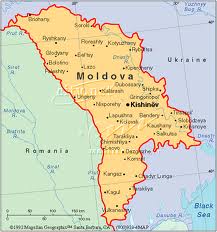 |
| CARACAS THE CAPITAL |
Venezuela's people are more of a
mixed blood which occurred during the long history of the European invaders.
Caracas as the capital was founded in
1567. It is in a valley of the central highland and at an altitude of 900m.
About 13% of the people living there and half of them in unsanitary,
overcrowded shanty towns.
Venezuela led the first revolt again
the Spanish South America Empire. It wasn't to be till 1821 when Simon Bolvar
won the Independent. He established with Ecuador, Colombia, Panama and
Venezuela a single state - Gran Colombia. After his death in 1830 the union
fell apart.
Venezuela had been an independent
republic since the early 19th century. However, it had civil wars and
dictorships right up to the Second World War.

VALENCIA
A gold domed Capital building in
Caracas is the seat of the government which consists of the Senate and the
Chamber of Deputies. They are getting voted every five years.
In 1958 the country freed itself from
military dictatorship and established the Christian Democrats and Democratic
Action Parties.
In 1993 Rafael Caldera won the election
with the National Convergence Coalition. The main points were reversal of some
economic reforms and a campaign against government corruption.
Venezuela borders in the east on
Guyana; in the south east on Brazil and Colombia is in the west. It has four
regions and they are the western plains around Lake Maracaibo; The Orinoco
Basin; and the Guyana Highlands in the east. There is the highest waterfall in
the world - Angel Falls - which cascade down 979m. This unbelievable waterfall
was named after Jimmy Angel who was the first Westerner in 1935 to see it.
These falls are formed by waters flowing out of the cliff-face.
Venezuela also has 72 islands and the
largest is Margarita Island.
 |
| ANGEL FALLS |
The River Orinoco is 2735km long. It
drains most of the central plains and the Guyana Highlands. Eventually flowing
into the Caribbean Sea. The northern coastal plains and the Caribbean islands
are arid. The windward mountain slopes of north Venezuela have about 28cm of
rain each year. The average temperature is 22C
The true rainforest in the humid
regions in the Orinoco River and the semi-tropical evergreen forests at the
higher regions make up 40% of the country. The rest of the land is grassland
which covers 50%
 |
| MOCHIMA NATIONAL PARK |
On Venezuela's northern coast,
Pedernales, where the Orinoco river flows into the Atlantic Ocean the fishery
industry is little developed; despite a coastline of 2800km. The main catch is
anchovies.
In Venezuela you will find jaguars,
pumas, ocelots, monkeys and snakes but in the north many species are endangered.
In Venezuela 80% are living in
cities. The problems arise that there are not enough jobs and enough houses.
Tens of thousands live in shanty towns called barrios. Therefore 19% of the
population are illiterate and the education system fights a constant battle.
 |
| CANAIMA NATIONAL PARK |
Outside Caracas, about 150km, in the
south-west are the llanos. Llaneros (cowboys) were raising cattle for
generations. It is a hard job and they have only singing and dancing for their
amusements after a full day's work.
On the Guajira Peninsular and a few
other regions are still some American Indians living in the traditional way.
The women wear their colourful, canvas cloths called manta. They keep their
house and support the family. The houses are still built in the same style as
when the Spaniards arrived.
Venezuela was a purely farming
country. In 1900 oil was discover under the Lake Maracaibo and it is up till
now that oil and gas are still the main mineral resources. The USA, Puerto
Rico, The Netherlands and Germany are all supplied with oil and oil products.
There is also a huge deposit of iron
ore which has a higher grade. The other mines are bauxite, diamonds and gold.
Only 4% of the country being used for
farming. They only grow bananas, corn, rice and sorghum for domestic
consumption. They grow sugar-cane, coffee and cacao for export and import food
especially grains and animals feed. They grow cattle as their main livestock.





